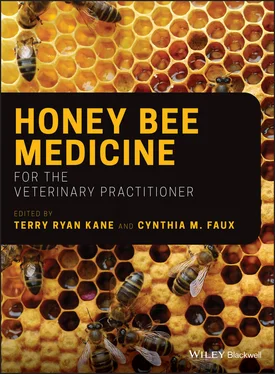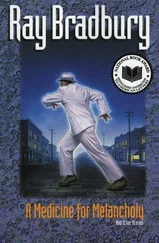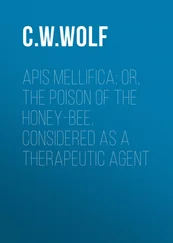In the first few chapters, you will learn about honey bees in nature, their arboreal homes, and behavior in the wild. It has been this unique eusocial behavior, division of labor, and adaptations that have allowed them to survive for many millennia. Proceed to the chapters on anatomy, physiology, behavior, colony organization, brood rearing, queen rearing, and swarming.
Bees, just like any other animal, get sick from a variety of diseases – bacterial, viral, fungal, and idiopathic. We provide specific chapters on these varied honey bee pathogens, including Colony Collapse Disorder (CCD). This disease syndrome, although not a major cause of bee mortality anymore, brought vital attention to the cause of global bee deaths, along with much needed research funding adding new knowledge on honey bee health and management.
Nutrition is a determining factor in honey bee colony health. The value and stability of an adequate food supply determine the homeostasis of the hive required for colony survival. Morphological changes within the caste members, be it queen development or forager phenotypes, depends on nutrition. We dedicated a large chapter of this text to honey bee nutrition for just these reasons.
Today, the top killer of our honey bees is an introduced pest, the Varroa mite. Many chapters will mention this pest and one is solely devoted to it. It is very difficult to kill an arachnid feeding upon an insect and that brings us to pesticide and pharmaceutical uses. This is an ever‐evolving area of research, looking at the synergistic effects of diseases combined with chemicals in the environment.
As stewards of animal health and participants in One Health, this book is for all veterinarians, veterinary students, technicians, bee research scientists, state/provincial apiarists, and beekeepers. This book is an interdisciplinary collaboration among veterinarians, entomologists, and the beekeeping community. We have forged new relationships to protect honey bees and all pollinators.
For these reasons, there has never been a better or more important time for veterinarians to be involved in honey bee and pollinator health. The honey bee, A. mellifera (and subspecies), may be the most important animal that we veterinarians care for. It would be a different and more difficult world without honey bees and other pollinators. The mutual interdependence of humans, animals, and our environment are exemplified in this One Health challenge.
We end this book with a look to the future, for bee and pollinator research and for the role of veterinarians in this expanding field. Above all, this book intends to teach and amaze you. We should all be humbled by these remarkable animals.
Section I Biology and Medical Foundations
1 Looking to Nature to Solve the Health Crisis of Honey Bees
Robin W. Radcliffe1 and Thomas D. Seeley2
1 Department of Clinical Sciences, College of Veterinary Medicine, Cornell University, Ithaca, NY, USA
2 Department of Neurobiology and Behavior, College of Agriculture and Life Sciences, Cornell University, Ithaca, NY, USA
* Illustrations by Anna Connington

Figure 1.1 Gathering honey , a beekeeping scene from the Tomb of Rekhmire. Egypt c. 1450 BCE (de Garis Davies 1930).
Scientists recently discovered the lipid residues of ancient beeswax inside the earthen pottery vessels of Neolithic farmers, which suggests that the origin of domestication of honey bees dates back to the onset of agriculture (Roffet‐Salque et al. 2015). The long association between humans and bees ( Figure 1.1), with mankind harnessing honey bees for food, medicine, and spiritual wellness, can be summed up in a single word: beekeeper. In this book, we introduce a new term to the English language: bee doctor. Etymologists, who study word metamorphosis, follow how the use of particular words gradually evolve in our language – e.g. from bee keeper, to bee‐keeper, and finally to beekeeper. Just as the “honey bee” is spelled as two separate words because it is a true bee, we will likewise separate “bee” and “doctor” since bee veterinarians are true doctors in every sense of the word. We work from single bee to whole colony, from individual cell to multicellular organism, and from microenvironment to ecosystem. Given the urgent call for modern Homo sapiens to reverse the anthropogenic impacts on pollinators everywhere, including our sacred Apis mellifera , we propose adoption of “bee doctor” without delay. Humans have been “keeping” bees for thousands of years, so we now have the word “beekeeper.” Only by forging a close connection between human beings and honey bees in all matters relating to their health, do we stand a chance to save one of earth's most industrious species – the one who gives us food, health, and happiness, and was idolized on the walls of Egyptian tombs. Perhaps someday we will even have the word “beedoctor.”
A Tenet of Medicine: Learn the Normal
Colonies of honey bees living in the wild are prospering in American forests even in the face of myriad stressors that are decimating the managed colonies living in apiaries. We know that both cohorts are exposed to the same parasites and pathogens. How then do wild colonies survive without beekeeper inputs, whereas managed colonies live just one to two seasons if humans do not intervene with various supplements or medicines? In examining this conundrum, we must ask ourselves as bee doctors, working hand‐in‐hand with beekeepers, how we should examine the health of the honey bee? A fundamental tenet of medicine is the need to learn what is normal (regarding anatomy, physiology, or the state of being known as health) before one can understand deviations from this baseline. We contend that the “normal” that bee veterinarians should be concerned about is the wonderfully adapted lifestyle of wild colonies of honey bees. In this chapter, we will highlight the important differences between wild and managed colonies of honey bees and we will suggest ways health professionals can make use of the marvelous tools for health and survival that evolution has bestowed upon Apis mellifera through adaptation and natural selection.
Declines of the world's pollinators are happening at an alarming rate, and it is predicted that these declines will have adverse impacts on pollinator‐sensitive commodities worth billions of dollars (Morse and Calderone 2000). The threat to the honey bee is perhaps the best understood of the pollinator declines. Its causes are diverse: widespread use of agrochemicals, loss of plant and floral diversity, invasive species, migratory beekeeping practices, and monoculture pollen sources. Furthermore, the stresses created by these environmental stressors are intensified by the honey bee's pests, parasites, and pathogens. Although no single disease agent has been identified as the cause of honey bee colony collapse, pests and pathogens are recognized as the primary drivers of the massive deaths of managed bee colonies worldwide. Many of these agents of disease are vectored by an ectoparasitic mite introduced from Asia, Varroa destructor (Ellis et al. 2010; Ratnieks and Carreck 2010).
Investigations of honey bee declines have focused primarily on the pathogens themselves and their interactions, which are now understood to be multifactorial (vanEngelsdorp et al. 2009; Becher et al. 2013; Di Prisco et al. 2016). Besides the pathogens, the environments in which honey bees live also profoundly impact colony survival. In this chapter, we will examine honey bee health and the alarming levels of colony mortality from an ecological and evolutionary perspective. We will embrace the logic of natural selection and we will learn important lessons from long‐term studies of honey bee colonies living in nature (Brosi et al. 2017; Seeley 2017b, 2019a; Neumann and Blacquière 2016).
Читать дальше













